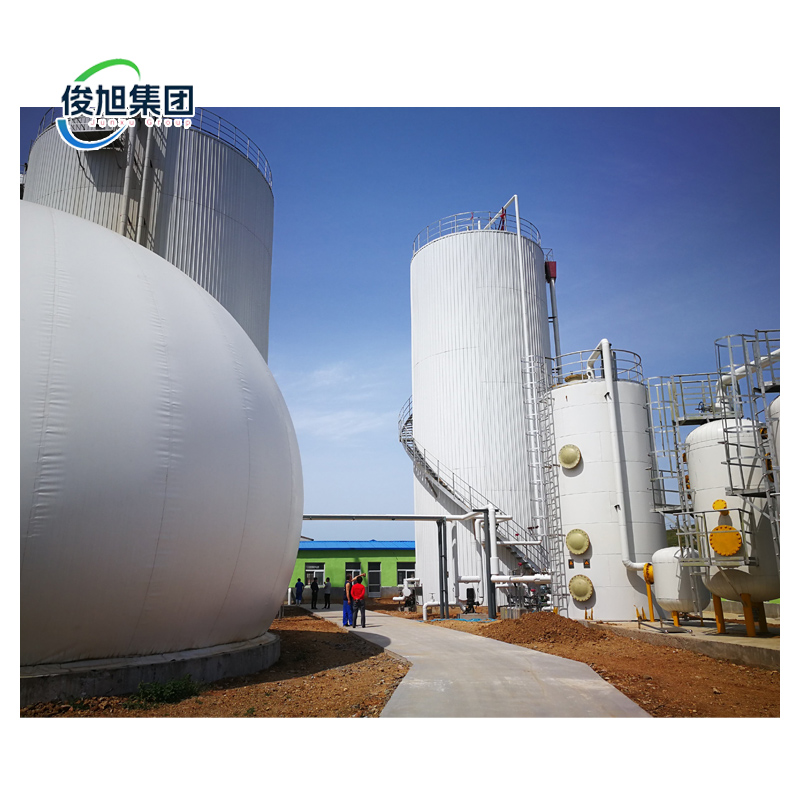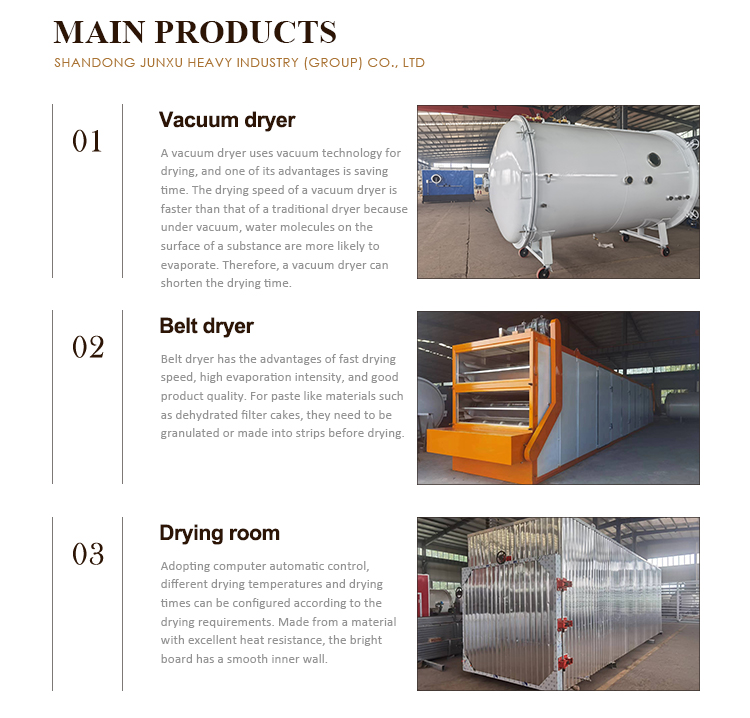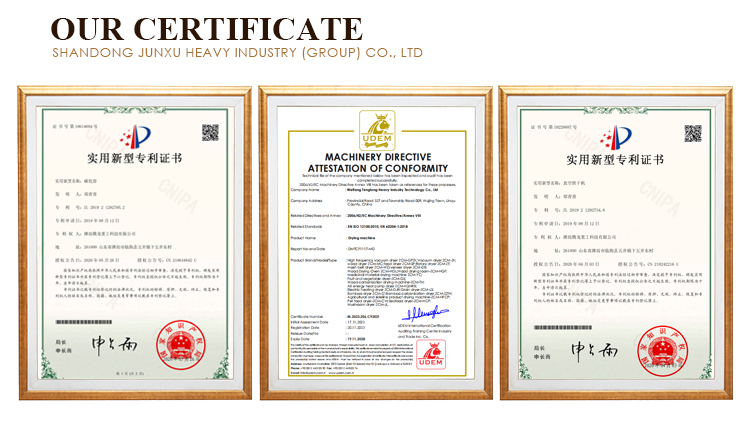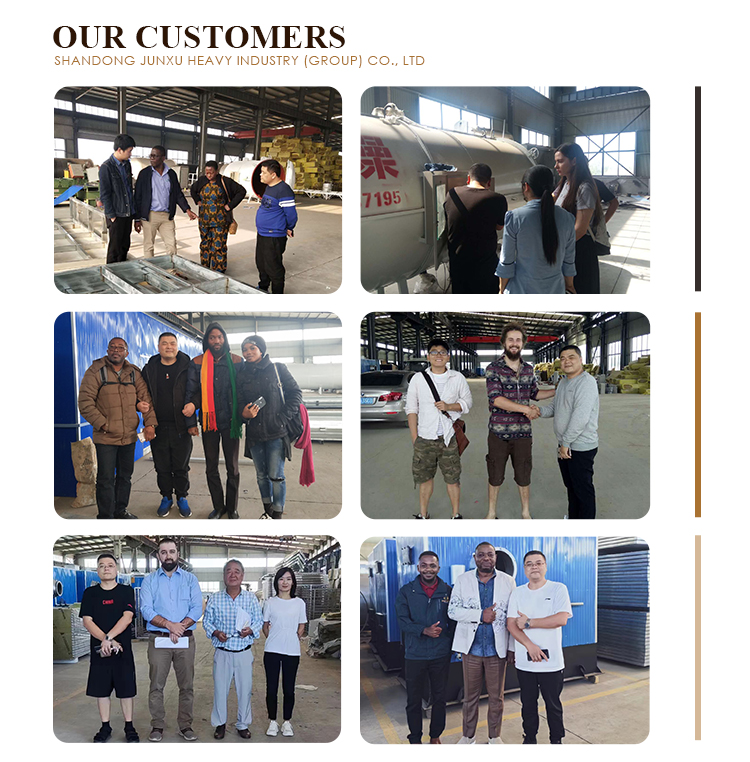Dry desulfurization: Dry desulfurization is a simple and relatively low-cost
desulfurization method, generally suitable for biogas
desulfurization with small biogas volume and low hydrogen sulfide
concentration. The basic principle of the equipment for dry removal
of hydrogen sulfide (H2S) from biogas gas is a method of using O2
to oxidize H2S into sulfur or sulfur oxides, also known as dry
oxidation method. The composition of dry process equipment is to
place fillers in a container, and the filler layer includes
activated carbon, iron oxide, etc. The gas passes through the
packing layer inside the container at a low flow rate, and hydrogen
sulfide (H2S) is oxidized to sulfur or sulfur oxides, remaining in
the packing layer. After purification, the gas is discharged from
the other end of the container.
Dry desulfurization mainly includes components such as main steel
structure, desulfurizer filler, observation window, pressure gauge,
temperature gauge, etc. Desulfurization towers are usually designed
as one for use and one for backup, alternating between one for
desulfurization and one for regeneration. Biogas containing
hydrogen sulfide (H2S) enters the bottom of the desulfurization
tower and undergoes the following chemical reactions with the
desulfurizer during the process of passing through the
desulfurization packing layer and reaching the top: ******Step:
Fe2O3 • H2O+3 H2S=Fe2S3+4 H2O (desulfurization) ******Step:
Fe2S3+3/2 O2+3 H2O=Fe2O3 • H2O+2 H2O+3 S (regeneration)
Biogas containing hydrogen sulfide first reacts with a desulfurizer
with a relatively high load at the bottom inlet. The upper part of
the reactor is a desulfurizer layer with a low load. By designing
good biogas airspeed and line speed, dry desulfurization can
achieve good precision desulfurization effect.
Before biogas enters the dry desulfurization tower, a condensate
tank or biogas particle filter should be installed. This device can
eliminate particle impurities in biogas and make biogas contain a
certain humidity before entering desulfurization.
When discoloration of the desulfurizer or excessive pressure loss
in the system is observed, another desulfurization tower should be
used alternately. The current desulfurization tower undergoes
natural ventilation after releasing biogas to regenerate the
desulfurizer. When the regeneration effect is poor, the waste
desulfurizer should be discharged from the bottom of the tower. At
the same time as the waste packing is discharged at the bottom,
fresh desulfurized packing of the same volume should be added to
the reactor.
Wet desulfurization: Wet desulfurization can be classified into three types: physical
absorption method, chemical absorption method, and oxidation
method. There is a problem of hydrogen sulfide reprocessing in
physical and chemical methods. The oxidation method uses an
alkaline solution as an absorbent and an oxygen carrier as a
catalyst to absorb H2S and oxidize it into elemental sulfur. The
wet oxidation method dissolves the desulfurizer in water, and the
liquid enters the equipment and mixes with biogas. Hydrogen sulfide
(H2S) in biogas reacts with the liquid to form elemental sulfur.
The liquids that absorb hydrogen sulfide include sodium hydroxide,
calcium hydroxide, sodium carbonate, ferrous sulfate, etc. The
mature oxidation desulfurization method can achieve a
desulfurization efficiency of over 99.5%.
In large-scale desulfurization projects, wet desulfurization is
generally used first for coarse desulfurization, and then dry
desulfurization is used for fine desulfurization.
The main body of the wet desulfurization tower includes a washing
tower, a hydrogen sulfide sampling and monitoring system, an
alkaline solution preparation tank, a water supply softening
device, a liquid level control system, and supporting components
When using sodium carbonate (Na2CO3) reagent for desulfurization,
the following reactions mainly occur:
H2S + Na2CO3 = NaHS + NaHCO3 ( 1 )
CO2 + Na2CO3 + H2O = 2 NaHCO3 ( 2 )
Due to the large amount of CO2 contained in biogas, it also
consumes alkaline solution. The system should be able to control
reaction conditions (including reaction temperature, pH value), set
optimal reaction conditions, and minimize the consumption of
alkaline solution as much as possible.
Biological desulfurization Biological desulfurization technology includes biological
filtration, biological adsorption, and biological drip filtration,
all of which belong to open systems, and their microbial
populations change with environmental changes. In the process of
biological desulfurization, oxidized sulfur-containing pollutants
first undergo biological reduction to form sulfides or H2S, and
then undergo biological oxidation to generate elemental sulfur
before being removed. In most bioreactors, the microbial species
are mainly bacteria, followed by fungi, and there are very few
yeast. The commonly used bacteria are Thiobacillus ferrooxidans,
Thiobacillus denitrifying, and Thiobacillus excreting. The
representative of success is Thiobacillus ferrooxidans, which grows
at a pH value of 2.0-2.2.













